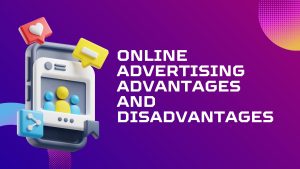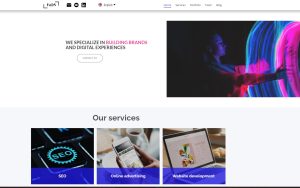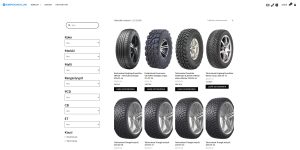Conversion rate optimization
Conversion rate optimization is aimed at increasing the percentage of website users who perform a desired action (purchase, form submission, subscription, etc.) through systematic testing of alternative versions of the page or the process of completing the action.
Let's discuss your project
In attempts to boost conversion, many haphazardly adopt others’ ideas. However, what worked for others may not necessarily work for you. Worse still is relying solely on your own subjective opinions. Most likely, you don’t align with the profile of the target audience and think differently.
Even minor website changes should be data-driven, revealing insights into the behavior of your specific target audience. Independent research, let alone guesses and intuition, serves as fodder for ideas and hypotheses that need validation. Let us share how we at FADS work on optimizing conversion.
What is conversion optimization or CRO?
CRO (Conversion Rate Optimization) is a systematic effort to enhance the overall shopping experience and increase the conversion rate. The goal is to boost transaction numbers and average order value without relying on additional traffic, achieved through increased sales. Key differentiators include ongoing systematic efforts, reliance on analytics and research data rather than judgments or intuition, and the absence of a one-size-fits-all approach to conversion optimization.
Is it worthwhile to focus on average conversion rates?
According to various sources as of January 2023, the average conversion rate in e-commerce is 2.47%. However, it’s crucial to understand that:
- Every online store is unique,
- Conversion rates may vary based on the desired action,
- Companies may not share accurate data,
- CR significantly depends on the industry niche.

The benefits of CRO
1. More profit with the same advertising expenses
There are various ways to increase profit, such as boosting traffic or conversion. However, attracting traffic through advertising is becoming more expensive and less effective, especially for low-conversion websites. Conversion optimization enhances efficiency with existing traffic, reducing customer acquisition costs. It’s more cost-effective to maximize value from existing visitors before seeking new ones. The saved funds can then be invested in traffic, directed to a high-conversion website.
2. Reduced risk of implementing unnecessary changes.
Making decisions based on personal feelings or guesses risks missing the audience’s needs, wasting time, and budget. What worked for someone else may not necessarily work for you. Thus, eliminating subjectivity is crucial. In CRO, all hypotheses are tested through split testing. We verify hypotheses supported by at least two sources, such as web analytics and surveys, reducing the risk of investing time and budget in a likely unsuccessful hypothesis. A new variant is implemented only after securing a confident victory, minimizing the risk of changes that could harm conversion.
3. Increased user loyalty.
Conversion through CRO methodology increases as the online store becomes user-friendly. The better the shopping experience, the happier the customers — and positive word of mouth follows. In an online store where they feel understood, users are likely to return, bypassing competitors’ sites.
Why pursuing CRO for the sake of CRO is a mistake?
Conversion optimization shouldn’t be an end in itself. A quick way to boost CR is to ‘drop’ prices, but it won’t necessarily increase profits, the ultimate goal of any business. Therefore, we don’t solely focus on CR but consider it in conjunction with other vital metrics, such as Average Revenue Per User (ARPU). Often, ARPU serves as the primary metric, and CR as a supplementary one. It’s crucial to understand that increasing conversion can occur through methods that don’t enhance user experience or, worse, lead to visitor dissatisfaction. Strive for approaches that not only boost conversion but also foster long-term customer relationships. Optimize conversion without neglecting usability.
Algorithm for Conversion Rate Optimization (CRO) in FADS
Deciding to approach conversion rate optimization systematically in our client projects, we explored various CRO methodologies. The standard algorithm for optimizing website conversion is straightforward:
- Data collection and analysis,
- Identification of insights and ideas, hypothesis formulation,
- Testing variations,
- Analysis of results,
- Implementation of changes,
- Repeat data collection.
However, there were discrepancies in the details of various approaches, and many overlooked significant aspects, in our opinion. It was important for us to:
- Keep both business goals (revenue and profit) and user needs (UX) in mind.
- Minimize subjectivity prevalent in heuristic analysis methods.
- Implement changes gradually and safely for clients and customers.
As a result, we developed our own approach to CRO, taking these important factors into account. Let’s delve into the detailed stages of the process.
Setting up data collection tools or verifying their proper functioning
When we receive a new CRO project, our initial focus is on configuring fundamental tools for quantitative research (Google Analytics/Enhanced Ecommerce) or verifying their proper functionality if they are already set up. Often, not all features of web analytics tools are utilized, and data may be incomplete or duplicated. If the website is on WordPress and the client is under our technical support, we adjust data collection ourselves, implement enhanced e-commerce, and more. For websites on other platforms or not supported by us, we create a technical specification for the client’s internal team or an external contractor.
After implementing changes, we assess the quality of data collection. If everything is in order, we await data accumulation. The data collection period depends on the purchase cycle, typically ranging from 10 to 20 days. For longer cycles, tracking data over an extended period is advisable. To determine the correct data collection period, utilize cohort analysis.
Data analysis and formulation of the conversion optimization strategy
At this stage, we:
- Conduct data analysis in analytics systems.
- Immerse ourselves in the product and study the target audience—fears, objections, decision-making motives for purchasing.
- Clarify with the client the value proposition that the company offers to potential customers.
- Analyze the offline retail purchase process to translate that experience online.
If needed, for a comprehensive picture, we conduct additional qualitative research:
- Unmoderated usability tests.
- Technical audit.
- Email surveys, additional on-site surveys.
- CustDev.
- Feedback analysis.
- Competitive analysis to gather best practices from the market.
Quantitative research can draw attention to problems, while qualitative research helps understand why users behave the way they do.
We provide a separate report for each study. After gathering all information, we identify common patterns in the results of both quantitative and qualitative research.
Gathering insights, scoring ideas, and forming hypotheses
While examining analytics data, we gain insights—new perspectives on a problem or its solution. For example, we notice that after using the online fitting room, purchases increase, but users rarely click on the actual functionality—this suggests the need to draw attention to it.
Insights evolve into ideas. All ideas are gathered into a unified backlog. Some are marked as ‘Just Do It’—obvious things that don’t require validation, such as identified bugs. For the rest, we set a key performance indicator, then score the ideas using a framework we developed ourselves.
Based on selected ideas and our checklist and template, we formulate hypotheses. All hypotheses are ranked based on optimization parameters. We specify:
- Primary and secondary metrics—preferably using ARPU as the primary metric, but for small traffic, less significant metrics can be chosen.
- Test duration—typically 14 days, depending on the purchase cycle and traffic.
- Cost of developing variations—some can be done quickly with Google Analytics, while others may require initiating a production process.
Preparing the optimization plan for testing
At this stage, we prioritize hypotheses considering their potential and resource intensity. We identify those that are likely to provide significant benefits with minimal investments of money and time.
Next, we present the completed work to the client’s team. Each research report is thoroughly discussed, and each hypothesis is examined in relation to the data. If we realize that there is insufficient data to strengthen a particular hypothesis, we discuss the need for additional research.
Ultimately, we arrive at a coordinated conversion optimization strategy with a list of hypotheses to be tested in a specific order.
Split Testing. Evaluating Results
Only now do we proceed to testing:
- Develop functionality for variations in split tests
- Configure split testing
- Update data on the primary metric and additional metrics
- Launch the A/B test at an agreed-upon time with the client
- Obtain interim results and check the test’s validity using an A/B testing significance calculator
- Stop the test at the agreed-upon time
- Measure primary and additional metrics
- Determine the result
- Present the result to the client
A prerequisite for accurate A/B testing is having sufficient traffic. With a small sample, results won’t be statistically significant, making it challenging to validate the hypothesis, or you may need significantly more time to obtain reliable results.
Before drawing conclusions about a positive result, we go through a checklist:
- The test involved no fewer visitors than recommended by the calculator.
- The test duration was a minimum of 2 weeks.
- Statistical significance is at least 95%.
- The primary metric increased by 2% or more.
- The sample size of the segment is sufficient.
If the test result is negative, that’s okay; we still learn more about user behavior. We document the result, capitalize on the experience, and formulate more successful hypotheses next time.
Avoid manipulating results to fit the hypothesis. If test results don’t confirm it, shift focus to other hypotheses and tests.
Monitoring the Implementation of the Winning Variant
If the client is under our technical support, we implement the winning variant ourselves. If not, we monitor the implementation. Then, we track how the innovation affects the changes in the project’s key metrics.
What's Next?
Conversion rate optimization is an ongoing process. After implementing a change, we resume data analysis, seek new ideas, and conduct additional research. Continuous CRO is the best opportunity to systematically and risk-free enhance ARPU, CR, and other crucial metrics for an e-commerce store.
Our blog

SEO Promotion of a New Website: Examples, Tricks, Features
In this article, we’ll delve into key aspects of SEO promotion for a new website in 2024, discussing the importance of planning site structure, effective

Google Ads Audit Checklist
When inheriting a PPC AdWords account, it often happens that the account has a unique structure that is only understood by its creator. If you

Online Advertising Advantages and Disadvantages
Internet advertising have become widespread, replacing traditional forms and entering new niches. They appear during short videos, messaging, and on social media pages. While online




